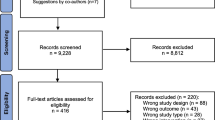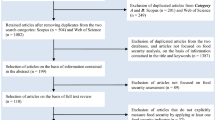Summary
Poor nutrition is the underlying cause of child death. However, comprehensive data showing the relationships between dietary-practices, food security, and nutritional status are scant. The present study aimed to examine the association of inappropriate feeding practices and household-hunger with anthropometric measures in children aged 6–23 months. A cross-sectional survey was conducted on randomly selected 525-households. Semi-structured interviewer-administered questionnaires were used to gather data on socio-demographic, child health, dietary-practices and household-hunger. Weight and height/length of the children were measured and analyzed using the new World Health Organization (WHO) Growth Standards. The prevalence of stunting, wasting and underweight as well as composite index of anthropometric failure (CIFA) were used to indicate under-nutrition. The overall prevalence of inappropriate feeding practices was 22.9%, rate of moderate households-hunger was 12.4%, and the prevalence of stunting, underweight and wasting was 16.2%, 6.9% and 6.3%, respectively, while the CIAF was 21.3%. The prevalence was significantly higher in young children aged 12–23 months than in infants aged 6–11 months. Children from households experiencing moderate hunger had significantly higher risk of being stunting (OR: 10.20; 95%CI: 2.00–51.50), underweight (OR:3.89; 95%CI: 1.40–10.90), wasting (OR: 1.97; 95%CI: 0.99–3.90), and CIAF (OR: 1.90; 95%CI: 1.05–3.45), than those residing in households experiencing no or mild hunger. Multi-disciplinary approaches are required to improve household food-security and child dietary practices, thus the nutritional status among young children.
Similar content being viewed by others
References
Bartlomiej MZ, Bernadeta P, Margriet V, et al. Nutrition of infants and young children (one to three years) and its effect on later health: A systematic review of current recommendations (EarlyNutrition project). Crit Rev Food Sci Nutr, 2017, 57(3):489–500
Saldan PC, Venancio SI, Saldiva SR, et al. Proposal of indicators to evaluate complementary feeding based on World Health Organization indicators. Nurs Health Sci, 2016, 18(3):334–341.
Skau JK, Bunthang T, Chamnan C, et al. The use of linear programming to determine whether a formulated complementary food product can ensure adequate nutrients for 6- to 11-month-old Cambodian infants. Am J Clin Nutr, 2014, 99(1):130–138
Briend A, Darmon N, Ferguson E, et al. Linear programming: a mathematical tool for analyzing and optimizing children’s diets during the complementary feeding period. J Pediatr Gastroenterol Nutr, 2003, 36(1):12–22
Santika O, Fahmida U, Ferguson EL. Development of Food-Based Complementary Feeding Recommendations for 9- to 11-Month-Old Peri-Urban Indonesian Infants Using Linear Programming. J Nutr, 2009, 139(1):135–141
Motuma AA, Azeb L, Bekesho G. Complementary Feeding: Review of Recommendations, Feeding Practices, and Adequacy of Homemade Complementary Food Preparations in Developing Countries-Lessons from Ethiopia. Front Nutr, 2016, 3(1):41–49
Daelmans B, Ferguson E, Chessa KL, et al. Designing appropriate complementary feeding recommendations: tools for programmatic action. Matern Child Nutr, 2013,9(2):116–130
Mulualem D, Henry CJ, Berhanu G, et al. The effectiveness of nutrition education: Applying the Health Belief Model in child-feeding practices to use pulses for complementary feeding in Southern Ethiopia. Ecol Food Nutr, 2016, 55(3):308–323
Issaka AI, Agho KE, Page AN, et al. Determinants of suboptimal complementary feeding practices among children aged 6–23 months in four anglophone West African countries. Matern Child Nutr, 2015, 11(1):14–30
USAIDS. Focusing On Improving Complementary Feeding in Ethiopia: Trials of Improved Practices in an Urban Area. IYCN, 2011, Washington, DC.
Lamichhane DK, Leem JH, Kim HC, et al. Association of infant and young child feeding practices with under-nutrition: evidence from the Nepal Demographic and Health Survey. Paediatr Int Child H, 2016, 36(4):260–269
Shumey A, Demissie M, Berhane Y. Timely initiation of complementary feeding and associated factors among children aged 6 to 12 months in Northern Ethiopia: an institution-based cross-sectional study. BMC Public Health, 2013, 13(1):1050–1057
ICF International. Children’s Health and Nutritional Status: Data from the 2011 Ethiopia Demographic and Health Survey, https://www.DHSprogram.com; 2012
ICF international, Central Statistical Agency (CSA) [Ethiopia]. Ethiopia Demographic and Health Survey (EDHS), https://www.DHSprogram.com; 2016
FANTA, USAID. Development of Evidence-Based Dietary Recommendations for Children, Pregnant Women, and Lactating Women Living in the Western Highlands in Guatemala, https://www.fantaproject.org/ sites/default/files/.../Guatemala-Optifood-June2014. pdf; 2014
Ballard T, Coates J, Swindale A, et al. Household Hunger Scale: Indicator Definition and Measurement Guide. Washington, DC, 2011.
Mercedes DO, Adelheid O, Elaine B, et al. WHO Multicentre Growth Reference Study: WHO Child Growth Standards based on length/height, weight and age. Acta Pædiatrica suppl, 2006, Suppl 450:76–85
Issaka AI, Agho KE, Page AN, et al. The problem of suboptimal complementary feeding practices in West Africa: what is the way forward? Matern Child Nutr, 2015,11(1):53–60
Schmeer KK, Piperata BA. Household food insecurity and child health. Matern Child Nutr, 2017,13(2): e12301–e12313
Mutisya M, Kandala NB, Ngware MW, et al. Household food (in)security and nutritional status of urban poor children aged 6 to 23 months in Kenya. BMC Public Health, 2015, 15(1):1052–1062
Salarkia N, Neyestani TR, Omidvar N, et al. Household Food Insecurity, Mother’s Feeding Practices, and the Early Childhood’s Iron Status. Int J Prev Med, 2015, 6(1):86–110
Acknowledgments
We thank the data collectors and local health extension workers, the local city administration authorities and the families of the children who participated. We appreciate Mr Tilahun Bekele for his facilitation during data collection easily linking data collectors with the community. We also thank Mr Desalgn Hedeta and Mr Tesfaye Obsina for translation and edition of our research tool into local language.
Author information
Authors and Affiliations
Corresponding author
Ethics declarations
The authors declare that they have no competing interests.
Additional information
This project was supported by China Scholarship Council (CSC), Nestle Nutrition Institute Africa (NINA) and Wollega University.
Rights and permissions
About this article
Cite this article
Berra, W.G., Yang, Nh. Households Hunger: The Key Attribute to Anthropometric Failures of Children in West Oromia (Ethiopia). CURR MED SCI 40, 580–585 (2020). https://doi.org/10.1007/s11596-020-2216-y
Received:
Revised:
Published:
Issue Date:
DOI: https://doi.org/10.1007/s11596-020-2216-y




